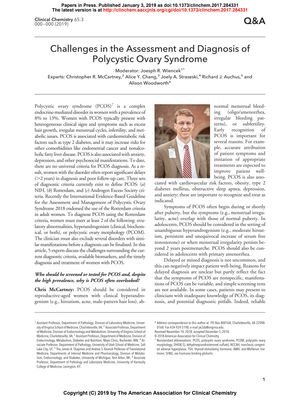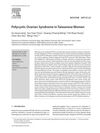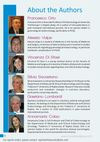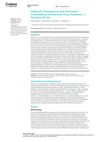Challenges in the Assessment and Diagnosis of Polycystic Ovary Syndrome
January 2019
in “
Clinical Chemistry
”

TLDR Diagnosing Polycystic Ovary Syndrome is hard due to varying symptoms, no set criteria, and the need for better tests and education.
The document from 2019 outlines the difficulties in diagnosing Polycystic Ovary Syndrome (PCOS), a condition affecting 8% to 13% of women and associated with a range of health risks. It describes the lack of universal diagnostic criteria, with three main sets (NIH, Rotterdam, and Androgen Excess Society) being used, and the Rotterdam criteria being the most endorsed. The challenges include the variability of symptoms, the need to exclude other conditions with similar presentations, and the lack of simple screening tests. The document recommends careful clinical evaluations, tracking of menstrual cycles, and specific laboratory tests to exclude other disorders. It also discusses the potential but not yet standardized role of anti-Müllerian hormone (AMH) in diagnosis and the importance of accurate assays for free testosterone. The need for clinician education, simple diagnostic tests, awareness of PCOS, and evidence-based criteria is emphasized, along with the importance of harmonized assays and specific reference intervals for androgens to improve diagnosis and management of PCOS.




